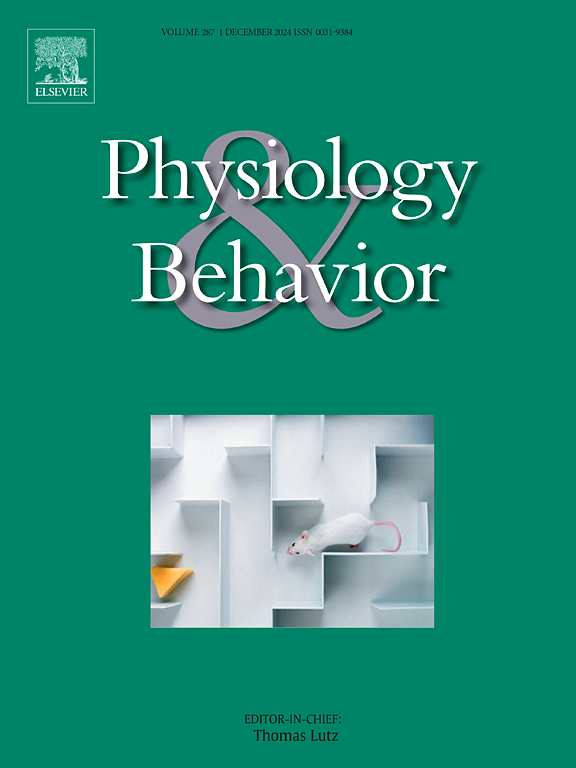爆炸暴露对感觉运动门控和恐惧记忆的影响。
IF 2.5
3区 医学
Q2 BEHAVIORAL SCIENCES
引用次数: 0
摘要
创伤性脑损伤(TBI)是军人致残的一个主要原因。除了与战斗有关的头部损伤外,由于经常使用小型炸药进行破坏和训练,军事人员很容易受到与爆炸有关的重复性脑外伤的伤害。然而,对于反复爆炸暴露后的功能后果或恢复情况知之甚少。在这里,我们测试了反复暴露于低强度爆炸会导致感觉运动门控和记忆缺陷的假设。雄性Sprague-Dawley大鼠暴露在使用压缩气体冲击波管的重复爆炸中。感觉运动门控通过触觉、视觉和听觉的预脉冲抑制(PPI)进行评估。在基线和爆炸暴露后1、3和7天检测PPI,以评估急性效应和恢复情况。为了确定剂量反应效应,爆炸次数(5、10或15次重复)和爆炸强度(7.5、15或25磅/平方英寸,PSI)都是不同的。爆炸对记忆的影响通过情境和线索恐惧条件反射以及爆炸后2周恐惧消退的获得和保留来评估。反复暴露于15-25 PSI的爆炸会短暂地扰乱PPI的多种感觉模式,对基线惊吓的影响最小,而7.5 PSI的爆炸则没有影响。25 psi的爆炸也会对情境恐惧记忆产生“剂量”依赖性的破坏。这些数据表明,在人类低水平爆炸暴露(如闪光弹)的刻度参数范围内的PSI水平可以诱导急性感觉运动门控和上下文记忆缺陷。未来的研究需要了解这些影响的机制和轨迹。本文章由计算机程序翻译,如有差异,请以英文原文为准。
Effect of blast exposure on sensorimotor gating and fear memory
Traumatic brain injuries (TBI) are a major cause of disability amongst military service members. In addition to combat-related head injuries, military personnel are vulnerable to repetitive blast-related TBIs due to the frequent use of small explosive charges for breaching and training. However, little is known about the functional consequences or recovery after repeated blast exposure. Here, we tested the hypothesis that repeated exposure to low intensity blasts results in deficits of sensorimotor gating and memory. Male Sprague-Dawley rats were exposed to repeated blasts using a compressed gas shockwave tube. Sensorimotor gating was assessed with prepulse inhibition (PPI) across tactile, visual, and auditory modalities. PPI was tested at baseline and 1, 3, and 7 days after blast exposure to assess acute effects and recovery. To identify dose response effects, both the number of blasts (5, 10, or 15 repetitions) and the blast intensity (7.5, 15, or 25 pounds per square inch, PSI) were varied. Blast effects on memory were assessed via contextual and cued fear conditioning, and acquisition and retention of fear extinction 2-weeks post-blast. Repetitive exposure to 15–25 PSI blasts transiently disrupted PPI across multiple sensory modalities, with minimal effects on baseline startle and no effects of 7.5-PSI. The 25-PSI blast also disrupted contextual fear memory “dose” dependently with repeated blasts. These data suggest PSI levels well within scaling parameters of low-level blast exposure in humans (e.g. flashbang) can induce acute sensorimotor gating and contextual memory deficits. Future research is needed to understand the mechanisms and trajectory of these effects
求助全文
通过发布文献求助,成功后即可免费获取论文全文。
去求助
来源期刊

Physiology & Behavior
医学-行为科学
CiteScore
5.70
自引率
3.40%
发文量
274
审稿时长
47 days
期刊介绍:
Physiology & Behavior is aimed at the causal physiological mechanisms of behavior and its modulation by environmental factors. The journal invites original reports in the broad area of behavioral and cognitive neuroscience, in which at least one variable is physiological and the primary emphasis and theoretical context are behavioral. The range of subjects includes behavioral neuroendocrinology, psychoneuroimmunology, learning and memory, ingestion, social behavior, and studies related to the mechanisms of psychopathology. Contemporary reviews and theoretical articles are welcomed and the Editors invite such proposals from interested authors.
 求助内容:
求助内容: 应助结果提醒方式:
应助结果提醒方式:


